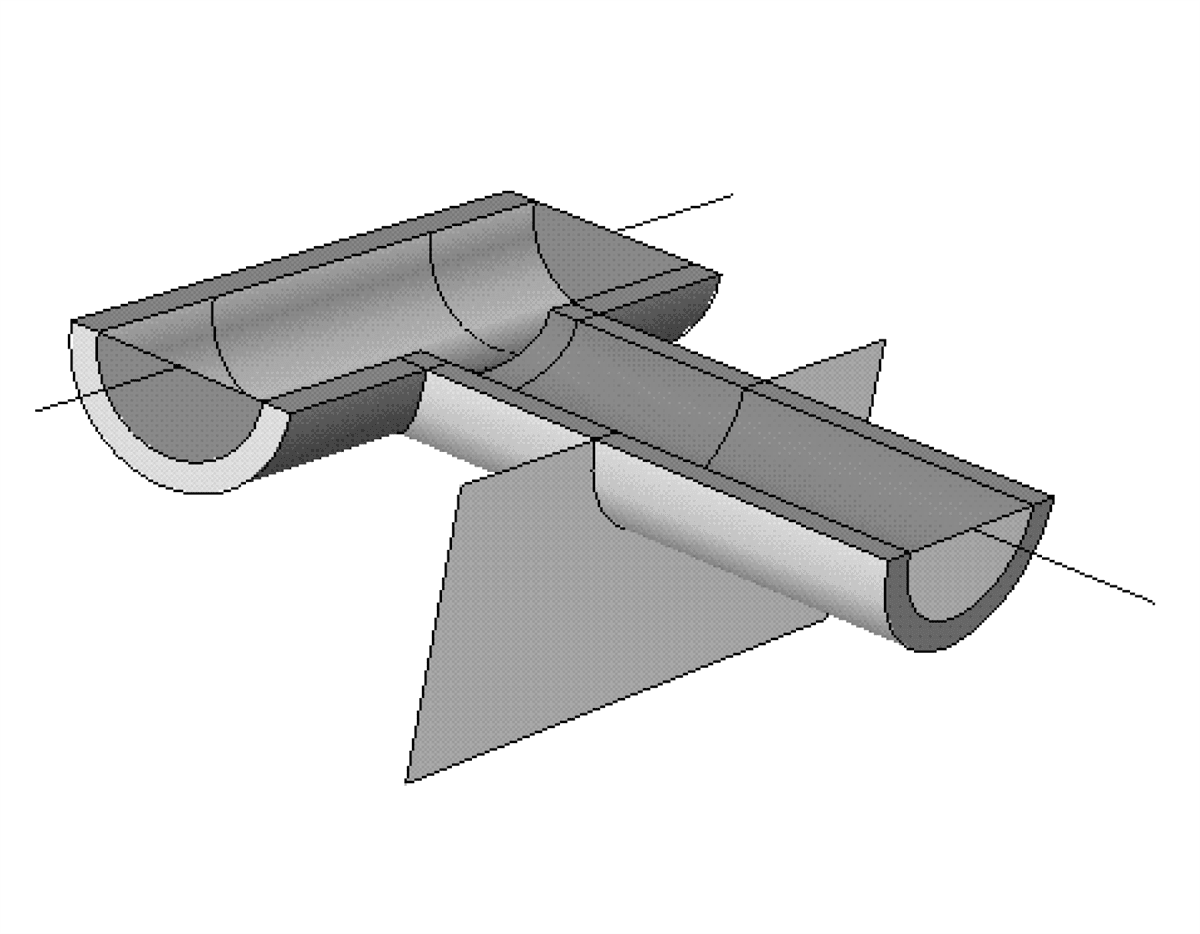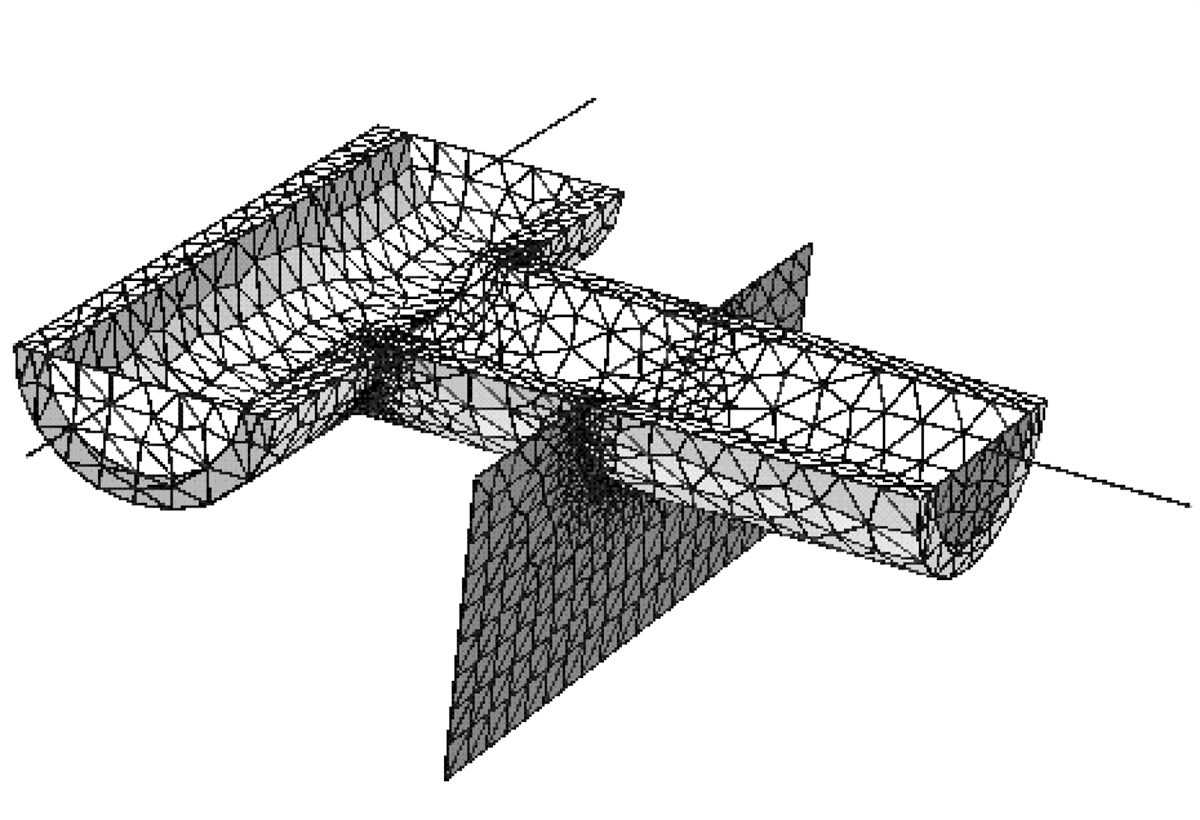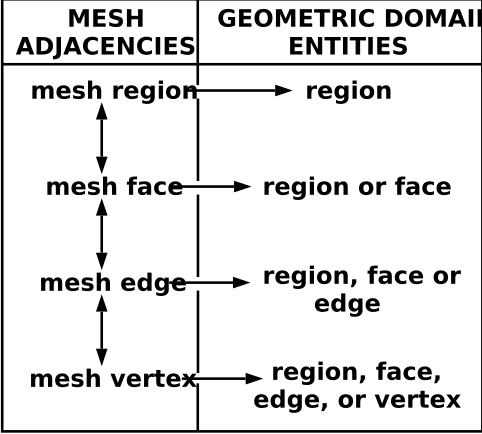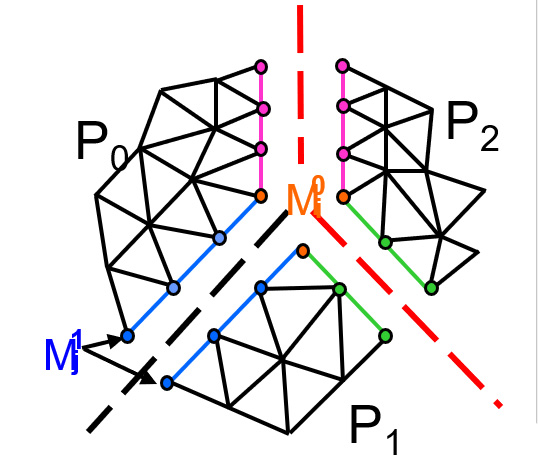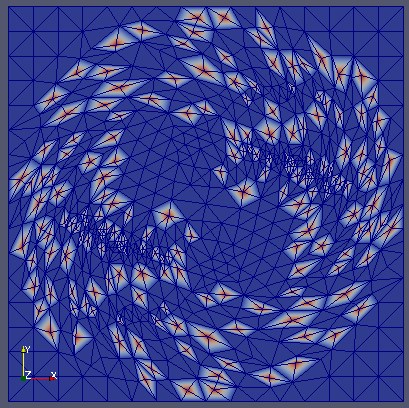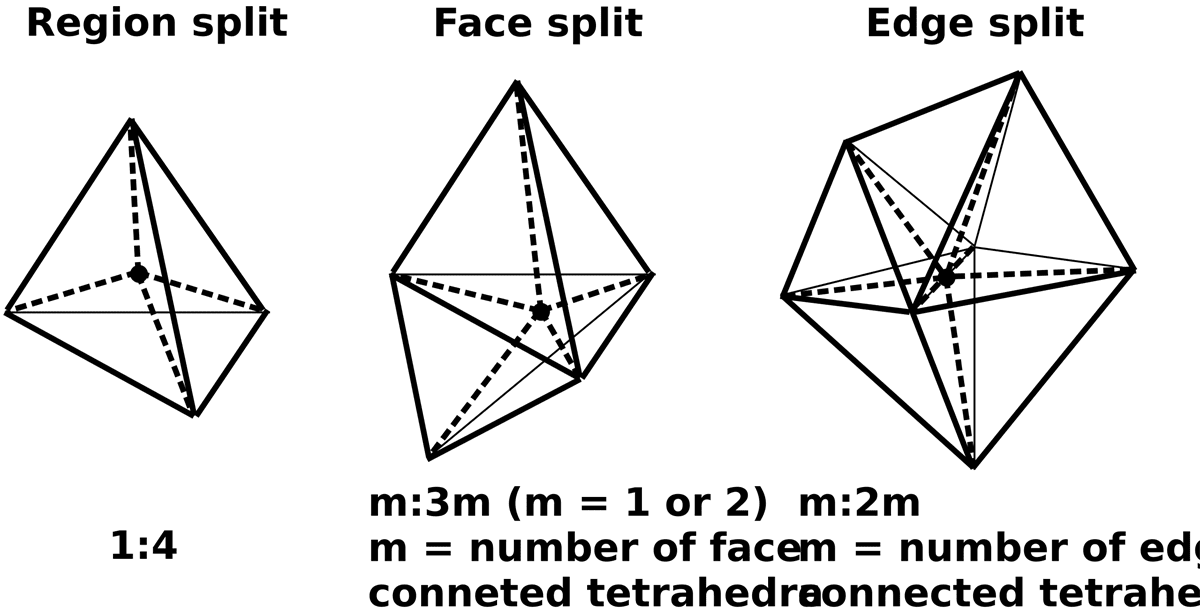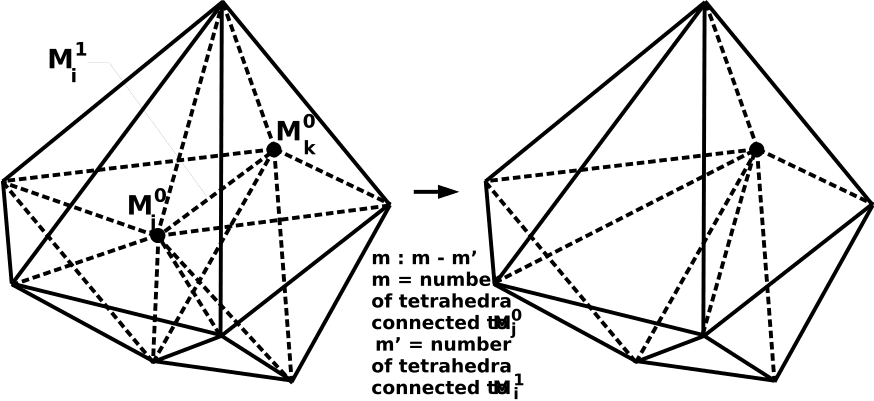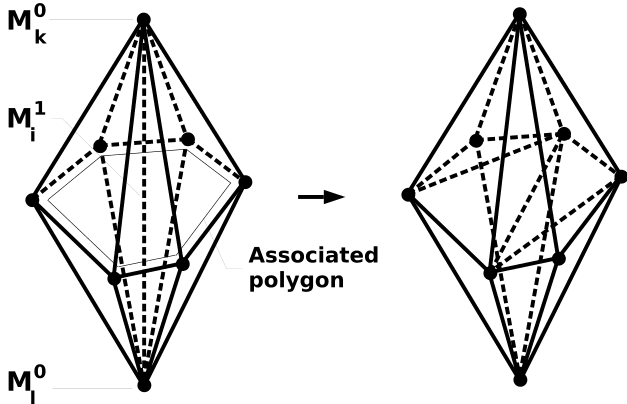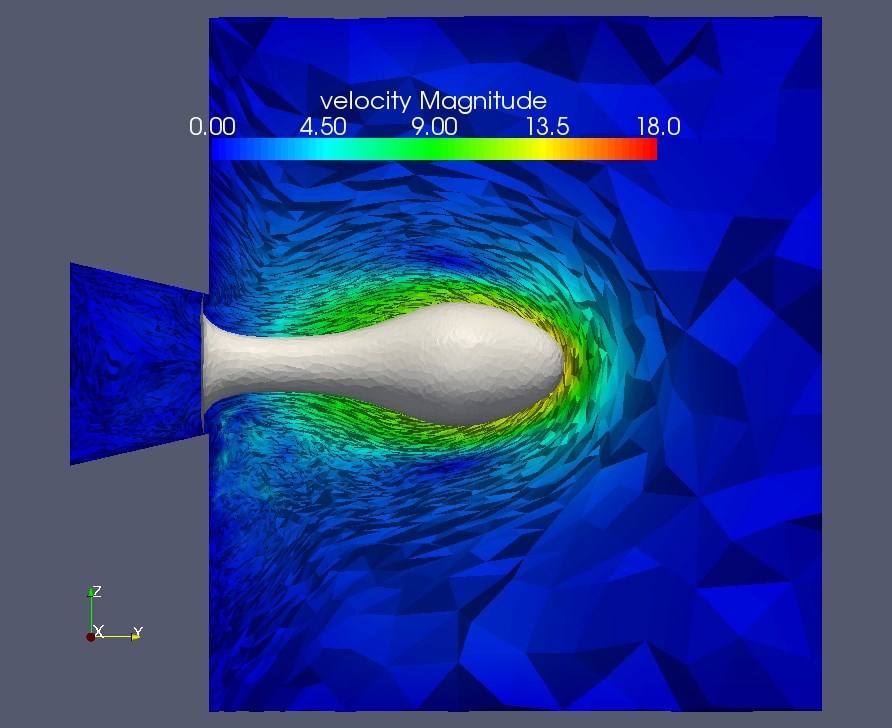The ability of unstructured mesh codes to automatically perform reliable simulations on massively parallel computers requires a mesh infrastructure that:
- Operates given a geometry based, mesh independent, problem definition.
- Support the full range to mesh interactions and operations required.
- Support adaptive mesh modification to meet accuracy requirements including when applied to evolving geometry problems.
- Executes effectively on the parallel computing systems targeted by the simulation code.
Primary Contact: Mark Shephard and Onkar Sahni
SCOREC Researchers: Merson, Sahni, Shephard, Smith
Parallel Unstructured Mesh Infrastructure Developments
To perform automated mesh-based simulation workflows the mesh generators must interact with a general definition of the simulation domain. The most effective definition of the geometric domain is non-manifold boundary representation that builds on the concept of topological entities and their adjacencies. Boundary representations also effectively support the specification of the simulation attributes of loads, material properties and boundary conditions.

Although being able to support geometry as defined in a CAD system, the CAD model input to an automated simulation is typically different from the design/manufacturing CAD in that it must be ”water tight” and not include tiny CAD healing features and detailed geometry not pertinent to the simulation. A combination of automated and interactive tools are under development to execute the process of going from manufacturing CAE model to analysis CAD models.

Design CAD model (left) and Simulation CSD model (right).
To support the associating of the simulation attributes to the mesh and various mesh-based operations, the mesh is also defined in terms of topological entities and their adjacencies. The relationship of the mesh entities to the geometric model entities is always maintained.
To support meshes with billions of elements on massively parallel computers the mesh must be distributed over multiple memory spaces. Two distributed mesh infrastructures that support the full range of mesh operations have been developed. The PUMI mesh infrastructure has been develop for CPUs and Omega_h mesh infrastructure has been developed for effective operation on GPUs.
To operate effectively on GPUs Omega_h includes a data parallel second level of parallelization that relies on a carefully structured set of array structures and the determination and control of independent sets to support the execution of the local mesh modification operations used in mesh adaptation.
Conforming mesh adaptation is carried out by using a set of local mesh modification operators that fully account for curved domain boundaries and support curved element geometries as required for high order finite element methods.
Evolving geometry problems are tackled by using a parallel interface tracking approach where both the computational domain and mesh are updated as dictated by the analysis. An interface-fitted conforming hybrid/mixed mesh with highly anisotropic layered elements is used. A judicious combination of mesh motion and mesh modification is employed to update the mesh to account for the interface motion. Efficiency is maintained by applying mesh modification only when necessary. During mesh motion and modification, the desired structure, shape and resolution of the anisotropic layered elements at the interface are maintained. All steps are performed on partitioned meshes on distributed-memory parallel computers.

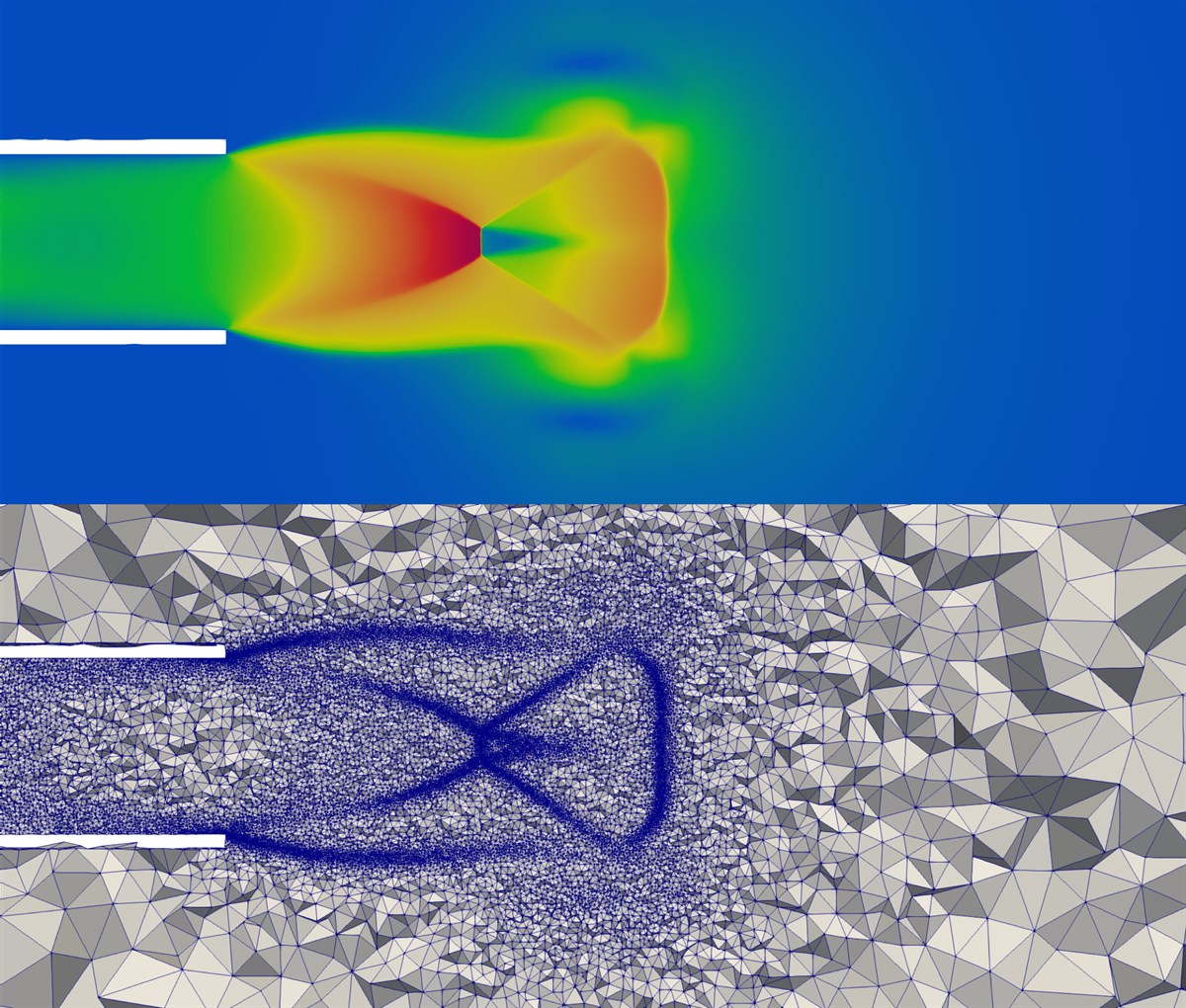
Key Publications:
- Ibanez, Daniel Alejandro. Conformal mesh adaptation on heterogeneous supercomputers. Rensselaer Polytechnic Institute, 2016. Omega_h
- Yang, F., Chandra, A., Zhang, Y., Tendulkar, S., Nastasia, R., Oberai, A.A., Shephard, M.S. and Sahni, O., 2022. A parallel interface tracking approach for evolving geometry problems. Engineering with Computers, 38(5), pp.4289-4305. https://doi.org/10.1007/s00366-021-01386-8
- Ibanez, D.A., Seol, E.S., Smith, C.W. and Shephard, M.S., 2016. PUMI: Parallel unstructured mesh infrastructure. ACM Transactions on Mathematical Software (TOMS), 42(3), pp.1-28. https://doi.org/10.1145/2814935
- Beall, M.W. and Shephard, M.S., 1997. A general topology‐based mesh data structure. International Journal for Numerical Methods in Engineering, 40(9), pp.1573-1596. https://doi.org/10.1002/(SICI)1097-0207(19970515)40:9<1573::AID-NME128>3.0.CO;2-9
- Li, X., Shephard, M.S. and Beall, M.W., 2005. 3D anisotropic mesh adaptation by mesh modification. Computer methods in applied mechanics and engineering, 194(48-49), pp.4915-4950. https://doi.org/10.1016/j.cma.2004.11.019
Software:
- PUMI
- Omega_h
- meshfields
- EnGPar
